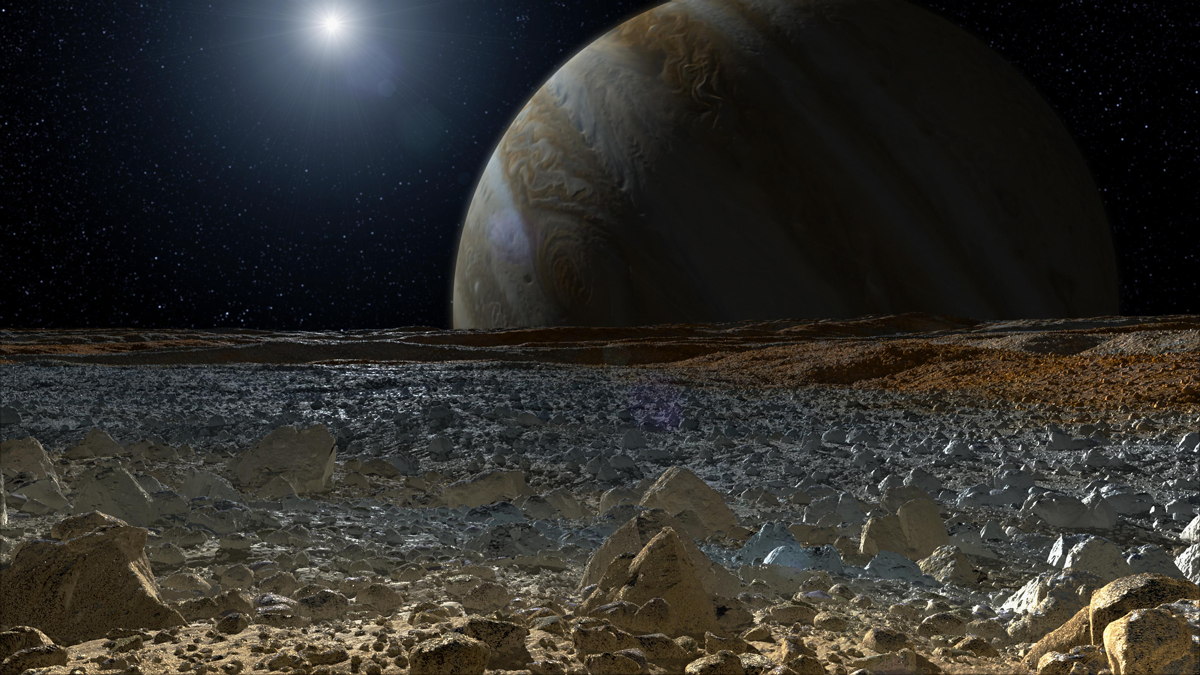NASA: Activity Spied on Europa, But It's 'NOT Aliens'

On Monday, NASA will host a teleconference "to present new findings from images captured by the agency's Hubble Space Telescope of Jupiter's icy moon, Europa."
If, like me, you were hopeful that this announcement might include hints of an extraterrestrial flavor, the space agency was keen to quickly nip any alien-related rumors in the bud:
Bummer.
Of course, any revelations about Europa's hypothetical alien inhabitants probably wouldn't have been a possibility; this is a Hubble-related astronomical discovery and we don't currently have a mission close enough to the enigmatic moon to seek out direct evidence for extraterrestrial life. But as noted in the NASA press release, the announcement is related to the "presence of a subsurface ocean on Europa," which is the key factor behind the moon's habitable potential.
RELATED: Europa's Epsom Salt May Indicate Ocean Life
There's already strong evidence that Europa possesses a sub-surface ocean cocooned inside a protective icy shell. Other studies suggest that the ocean circulates the crater-free surface, creating icy tectonics, absorbing chemicals from the surface into the ocean below. Interactions between Europa's hot, rocky core could make the water salty. All of these factors means that any hypothetical lifeforms in that ocean could have access to nutrients.
WATCH VIDEO: HUGE Water Geysers Found on Jupiter's Moon!
Get the Space.com Newsletter
Breaking space news, the latest updates on rocket launches, skywatching events and more!
Some of the more interesting hypotheses about Europa include the possibility that the ocean may not only be able to support basic microbial life, there could be enough dissolved oxygen to support the evolution of complex, multi-cellular life forms. If you're thinking Europan jellyfish, you're not alone.
ANALYSIS: Dazzling New View of Europa's Frozen Red Veins
In 2013, Hubble detected the presence of a plume of water vapor surrounding the moon, boosting hopes that geysers are blasting through Europa's thick crust, releasing some of the ocean's water to space. Europa became the second moon in the solar system, after Saturn's moon Enceladus, to be known to vent water through its icy crust. Not only does the presence geysers provide further powerful evidence of the existence of a liquid water ocean, venting it into space provides an opportunity for our robotic missions to directly sample the chemicals it contains. NASA's Cassini mission at Saturn has sampled Enceladus' briny water vapor and, after the 2013 Hubble find, hopes were high the same could be done for Europa.
However, the excitement was short-lived; Hubble couldn't repeat the observation, possibly indicating that the first vapor detection was in error, or a transient event like an asteroid impact.
RELATED: NASA's Europa Mission Will Look for Life's Ingredients
Could this "surprising activity" on Europa announcement on Monday be related to the detection of another plume of water vapor? If so, it will be a very exciting find, confirming the moon has an active sub-surface ocean that is released via geysers to space. And if this is the case, it will surely boost excitement for NASA's "Europa Clipper" concept as not only a mission that will study the moon up-close, but a sampling mission that could get a taste of Europa's sub-surface ocean to find out if it has the right ingredients for life.
Originally published on Discovery News.
Join our Space Forums to keep talking space on the latest missions, night sky and more! And if you have a news tip, correction or comment, let us know at: community@space.com.
Ian O'Neill is a media relations specialist at NASA's Jet Propulsion Laboratory (JPL) in Southern California. Prior to joining JPL, he served as editor for the Astronomical Society of the Pacific‘s Mercury magazine and Mercury Online and contributed articles to a number of other publications, including Space.com, Space.com, Live Science, HISTORY.com, Scientific American. Ian holds a Ph.D in solar physics and a master's degree in planetary and space physics.
